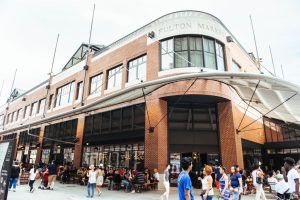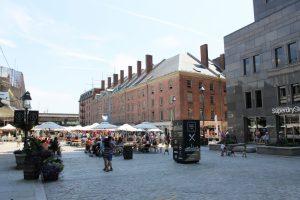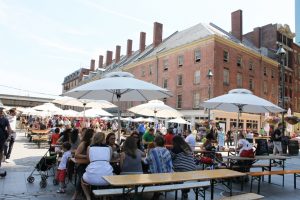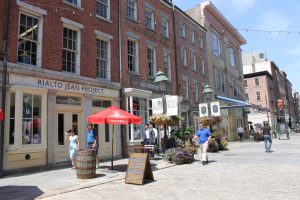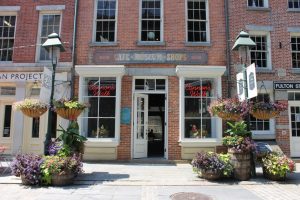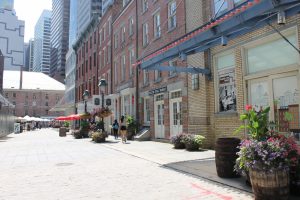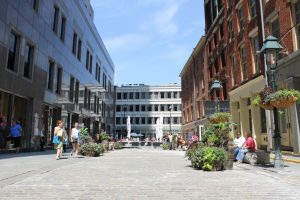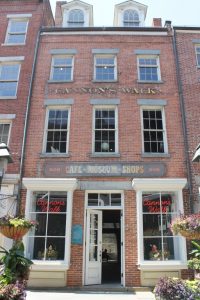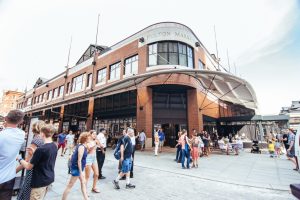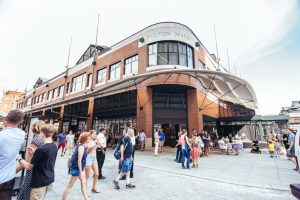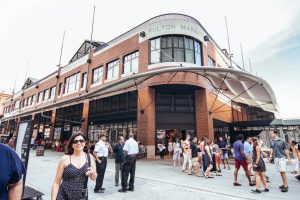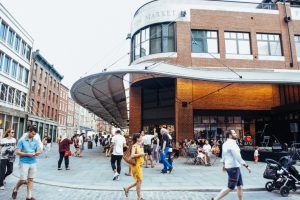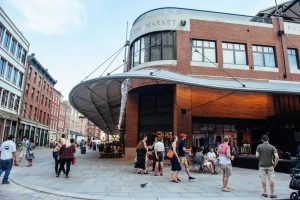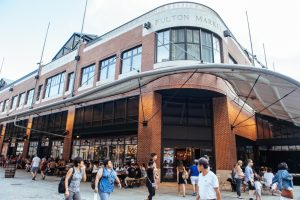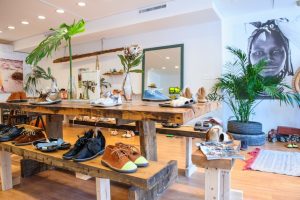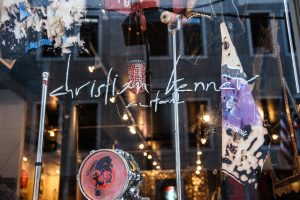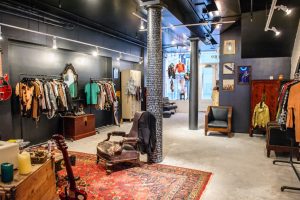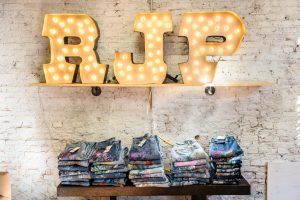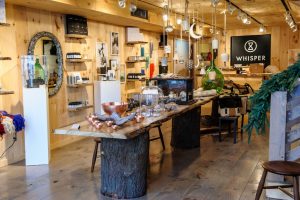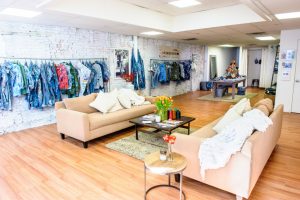The Numbers
The Seaport District charms Lower Manhattan as New York’s oldest neighborhood, with 19th Century architecture scaling cobblestone streets along the ports and piers of the East River, offering beautiful views of the Brooklyn Bridge and the Statue of Liberty.
A population of 131,000 easily accesses all corners of the area, with 13 subway lines, 25 bike stations and six ferry terminals carrying locals and tourists across the historic maritime hub. During the day, more than 500,000 people visit Seaport and its constantly expanding commercial developments.
The Pulse
In 2012, Hurricane Sandy devastated the area, forcing many businesses to relocate inland, thus driving the retail scene away from Seaport. Recently, New York-based real estate development company Howard Hughes Corp. accepted the challenge to revitalize Seaport as a retail, entertainment and dining destination. Independent retailers and designers of striking variety continue appearing along several blocks and Pier 17.
“There is a great eclectic mix of retailers, [including] big, global brands and little neighborhood shops who decided to stay and fix up their damaged stores after Sandy,” explains Jhipo Hong, vp of the Retail Design Institute’s New York chapter.
Advertisement
To name a few: Northern Grade (Minneapolis) features a store design and shopping experience unique to its Seaport flagship, offering American-made leather, apparel and accessories, and Milan-based 10 Corso Como will soon reveal its first store in North America here. iPic Theaters, an affordable luxury movie-going experience, recently opened as the foundation of Seaport’s modern entertainment destination.
“[The retail has] a great balance,” says Hong, citing the neighborhood’s diversity as a big pull for shoppers and tourists. “It really helps to draw people in.”
The Hotspots
Up and down city blocks, Howard Hughes Corp. is currently re-conceptualizing historic infrastructures, such as the Tin Building and the Fulton Market Building.
Pier 17 is one such development, a lifestyle destination (set to open in 2017) that will encompass 400,000 square feet of retail, as well as eateries from world-renowned restaurateurs, including Jean-Georges Vongerichten, of Momofuku Group, and By Chloe, cementing Seaport as an exclusive culinary haven. Locals and tourists alike will enjoy waterfront views from the Pier’s outdoor rooftop, featuring bars and seasonal concerts and events.
Obstacles and Opportunities
Advertisement
“It’s a small area concentrated with a lot of great structures,” explains Hong. “Some buildings are from the 1800s, [next to] brand new buildings popping up.” Hong notes the area is exceptionally viable for retail opportunities and real estate, as long as developers remain cognizant of Seaport’s diversity when considering specific retailers and merchants.
Bordering the Wall Street Financial District, Seaport enjoys a built-in customer base, attracting families, young professionals and a blend of people devoted to reinventing the Seaport District as a culturally fluid, active community.
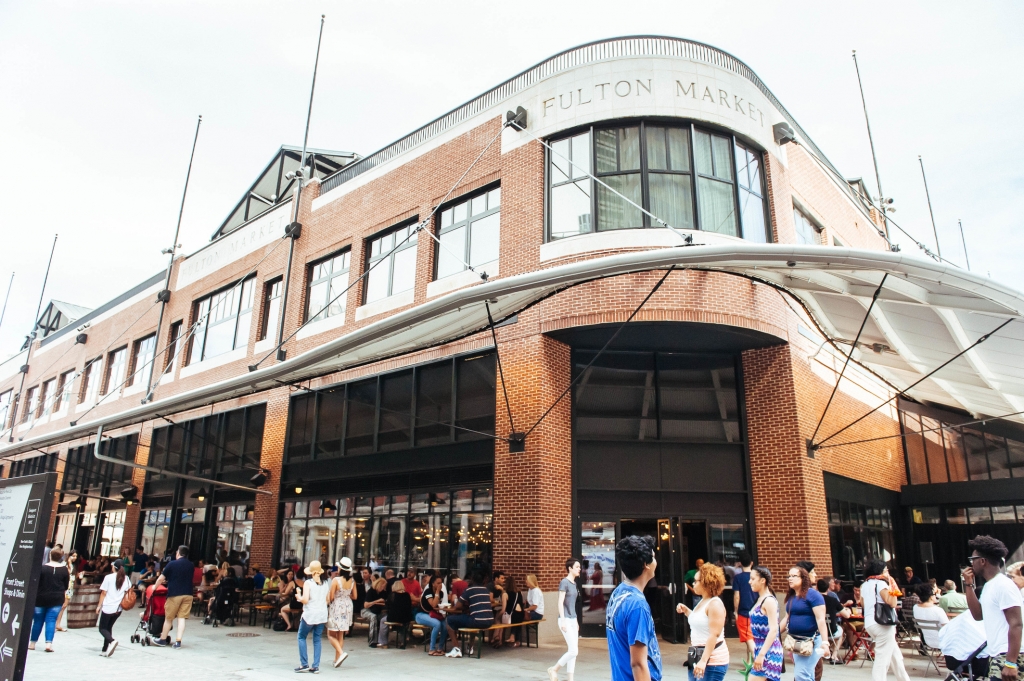

 Headlines6 days ago
Headlines6 days ago
 Headlines2 weeks ago
Headlines2 weeks ago
 Headlines1 week ago
Headlines1 week ago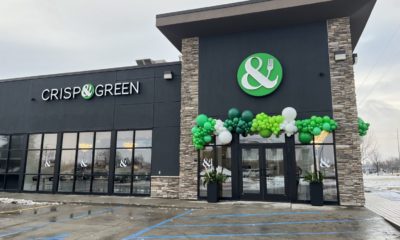
 Headlines2 weeks ago
Headlines2 weeks ago
 John Ryan2 weeks ago
John Ryan2 weeks ago
 Sector Spotlight1 week ago
Sector Spotlight1 week ago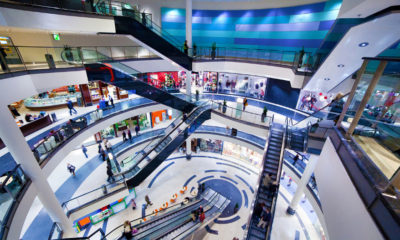
 Headlines2 weeks ago
Headlines2 weeks ago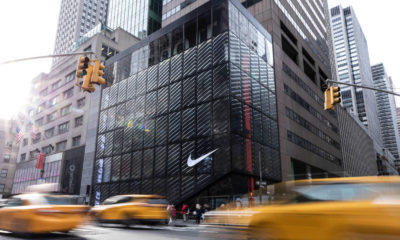
 NEXT UX2 weeks ago
NEXT UX2 weeks ago
